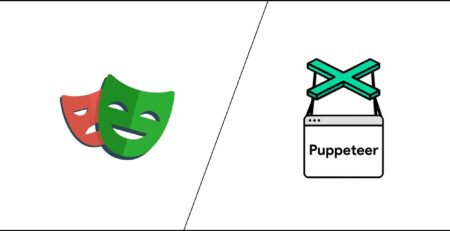Easiest Way to Learn What Is Garbage Collection In Java – Devstringx
Garbage collection in Java is an essential process that makes Java a powerful programming language. Garbage collection is the process of freeing up memory taken up by objects that are no longer referenced or used by the program. This allows programs to scale and not run out of memory when running for long periods of time. In this blog post, we will discuss what garbage collection in Java is, the types of garbage collection, and when it should be used. We will also delve into how garbage collection works behind the scenes so you can better understand how this process helps keep your program running smoothly.
What is Garbage Collection in Java?
Garbage collection is a process of automatically freeing memory that is no longer being used by a program. This is done to improve the performance of the program and avoid memory leaks. There are two types of garbage collection in Java: automatic and manual.
Automatic garbage collection performs by the Java Virtual Machine (JVM). When it detects that memory is no longer being used by a program. This can happen when an object is no longer reachable by the program, or when the program explicitly calls for garbage collection. Manual garbage collection performs by the programmer, using the System.gc() method. This method can call at any time, but it is typically only called when memory usage is critical and the programmer wants to ensure that unused memory is freed up as soon as possible.
Types of Garbage Collection
There are four types of garbage collection in Java:
- Serial GC: This is the most basic form of garbage collection and uses by default in most single-threaded applications. In this type of GC, only one thread use to collect garbage from the heap.
- Parallel GC: This type of GC is more efficient than serial GC and uses by default in most multi-threaded applications. In this type of GC, multiple threads use to collect garbage from the heap.
- Concurrent Mark and Sweep (CMS) GC: This type of GC design is more concurrent than other types of GC, meaning that it can run while your application is still running. However, CMSGC can cause longer pauses than other types of GC if not configured properly.
- G1GC: This is the newest type of garbage collector and designs to provide low latency and high throughput for both small and large heaps.
When Should Garbage Collect in Java?
In Java, garbage collects automatically. This means that when an object is no longer needed, the memory it occupies can reclaim by the system and use for other purposes.
The Java runtime uses a garbage collector to manage memory. The garbage collector runs periodically, scanning all live objects in a heap and reclaiming those no longer needed. Once the garbage collector has identified an unused object, it performs any necessary clean-up operations before making the memory available for reuse.
One benefit of automatic garbage collection is that it can help reduce memory leaks. A memory leak occurs when an application allocates memory but fails to properly release it when it no longer needs it. Over time, this can result in the application using an increasingly large amount of memory, which can eventually lead to poor performance or even Out of Memory Error. By reclaiming unused objects, garbage collection helps prevent memory leaks from occurring.
Read Also:- How to Prevent Html Injection In Javascript
How does Garbage Collection Work in Java?
When an object is no longer reachable, the Java garbage collector runs and reclaims the memory associated with that object. There are different types of garbage collectors. The most common one used in HotSpot JVMs is the parallel scavenge garbage collector.
The parallel scavenges garbage collector uses multiple threads to scan different memory areas for objects that are no longer reachable. Once it finds an unreachable object. It will trace back through that object’s references to find all other objects that are reachable from it. This process calls “marking.” Once all reachable objects have been marked, the garbage collector will then reclaim any memory that is not reachable and associated with an unreachable object.
In Java, garbage collection is the process of reclaiming memory occupied by objects that are no longer needed. This is done by means of a garbage collector, which is a program that runs periodically to free up memory.
There are two types of garbage collection in Java: automatic and manual. Automatic garbage collection performs by the Java Virtual Machine (JVM) when it detects that an object is no longer needed. Manual garbage collection performs by the programmer, using the System.gc() method.
The JVM uses a mark-and-sweep algorithm for automatic garbage collection. This means that it first marks all objects that are no longer needed, and then removes them from memory. The mark phase can trigger in several ways, such as when the JVM runs out of memory, or when the GC threshold reaches.
The GC threshold is a configurable setting that determines how often the garbage collector should run. The higher the GC threshold, the less often the garbage collector will run. This can lead to more memory use overall. Conversely, setting a low GC threshold will cause the garbage collector to run more frequently, but this can lead to decreased performance as the JVM spends more time managing memory.
Conclusion
In conclusion, garbage collection in Java is an important and powerful feature of the language. It helps to manage memory efficiently. It ensures that objects which are no longer referenced by your program can safely remove from memory to free up resources for other activities. There are various types of garbage collectors available. Serial, Parallel, Concurrent Mark-Sweep (CMS), G1, etc are good examples of garbage collectors. Understanding these different types can help you choose the right one for your application’s needs.
Related Post:-














